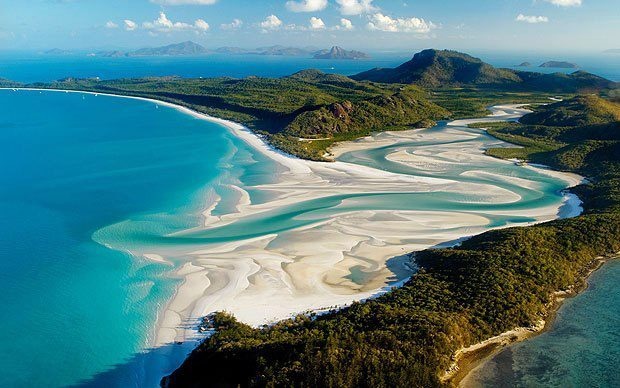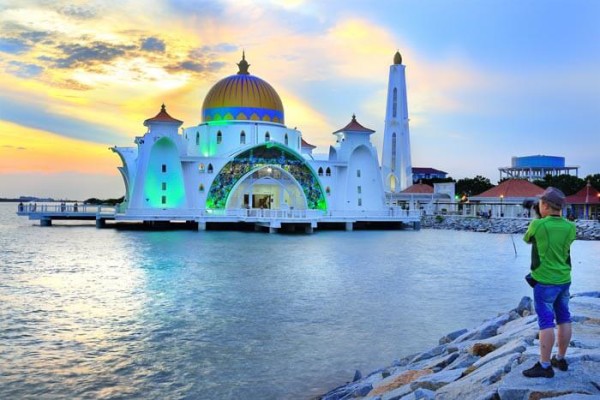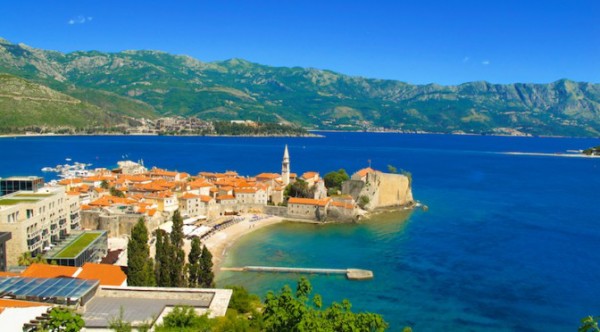
Ostrog Monastery
Arranged high up in the substantial rock of Ostroska Greda, the Ostrog Monastery is the nation’s most unusual architectural site and a noteworthy Christian journey destination. The entire monastery was carved out of a cave in a nearly vertical mountain cliff with only the whitewashed façade left visible. Worked in the seventeenth century as an asylum against the Ottoman Empire, it houses the remaining parts of its founder, Sveti Vasilje, who was sainted after his passing in 1671. The religious community incorporates two internal cavern churches ornamented by frescoes, some of which were painted specifically on the stone dividers.
Perast
Situated toward the northwest of Kotor and having the same flawless fjord-like straight, lovely Perast is a small town outstanding for it stone-crafted villas and notable churches. Two of the city’s beautiful sanctuaries are arranged on minor islets, Our Lady of the Rocks and St. George. Back inland, the Church of St. Nikola is justified regardless of a visit for the charming perspectives that a move up to the steeple offers of the town and bay. While there’s no beach in this bay-front city, the stone jetties along the waterfront are popular places for sunbathing and relaxing.
Durmitor National Park
Centered around the mountain village of Žabljak, the thickly forested Durmitor National Park is a paradise for nature lovers and outdoor enthusiasts. Situated in the Dinaric Alps, the park includes the high-altitude peaks of the Durmitor Massif, 18 glacial lakes and the Tara River, home to the world’s second deepest gorge. Skiing and snowboarding are the main activities in winter while whitewater rafting, camping and hiking attract visitors in the warm-weather season. The park’s wildlife includes 163 bird species, mammals ranging from wild boars to brown bears, and the most varieties of butterflies found anywhere in Europe.
Budva
Situated in the inside purpose of Montenegro’s coastline, Budva gloats a beautiful Old Town, an abundance of beaches and a few essential social organizations, including the adolescence home of Serbian writer and politician Stefan Mitrov Ljubiša. It’s the city’s vibrant nightlife, however, that makes Budva the most popular place to visit in Montenegro. By night, revelers crowd the city’s many bars, clubs and eateries, and afterward spend the day unwinding at one of the area’s 35 shorelines. Those searching for a more casual spot on the Budva Riviera head to close-by Bečići, which offers a laid back area and a delightful sandy shoreline.
Kotor
Considered one of the best preserved medieval towns on the Adriatic coast, the fortified town of Kotor is tucked against the steep mountains encompassing the profound channels of the Bay of Kotor. While Kotor’s architecture mirrors the different realms that ruled over the locale, it is best known for its Venetian-enhanced Old Town, which is overwhelmed by the twelfth century Cathedral of Saint Tryphon. The house of prayer’s cut stone sacrificial table is a lovely case of the stonemasonry abilities Kotor was known for in the Middle Ages. Treks up the upper town walls to Kotor’s hilltop fortress reward hardy hikers with breathtaking views of the city and deep-water bay.
Also see this post on The Crazy Tourist on Montenegro’s best places to visit.


